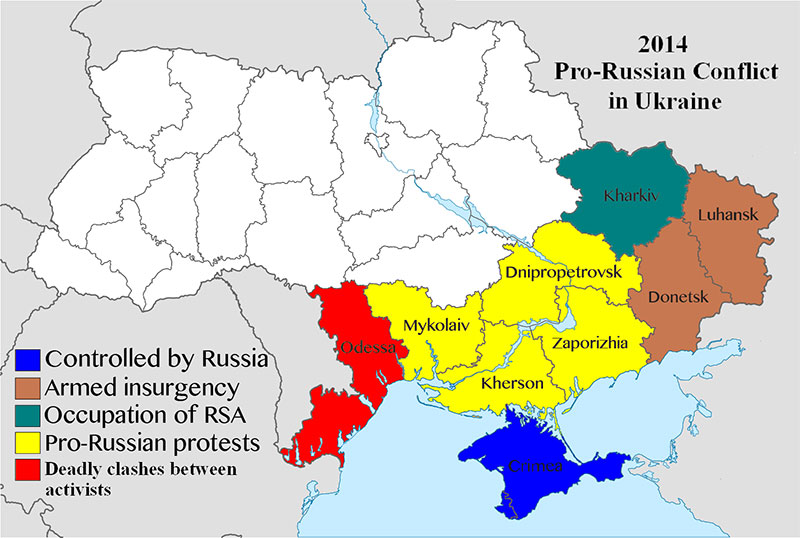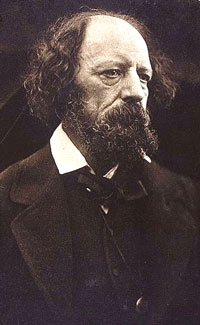The Charge of the Light Brigade

“…All in the valley of Death
Rode the six hundred.
‘Forward, the Light Brigade!
Charge for the guns’ he said.
Into the valley of Death
Rode the six hundred.”
“Cannon to right of them,
Cannon to left of them,
Cannon in front of them
Volleyed and thundered.
Stormed at with shot and shell,
Boldly they rode and well,
Into the jaws of Death,
Into the mouth of hell
Rode the six hundred.”
Many are familiar with Alfred, Lord Tennyson’s famous poem that followed by a few days the newspaper reports of a military disaster for British forces at the Battle of Balaclava on October 25, 1854. It took place in Crimea, which is very much in the news today because of the present war between Russia and Ukraine. The Crimean War from 1853 to 1856 was between the British Empire and its allies ( principally France and the Ottoman Turks) and the Russian Empire. Crimea had been part of the Russian Empire since 1783. The Battle of Balaclava was part of the siege of Sevastopol, Russia’s principal naval base on the Black Sea.

The British Army under Field Marshall, Lord Raglan, had 25,000 troops and 41 guns. French and Turkish forces were 7,000 and 1,000, respectively. The Russians had 25,000 men and 78 guns. Raglan’s cavalry division, commanded by Lt. General, Lord Lucan, consisted of a heavily armored “heavy brigade” of about 760 men and a lightly armed “light brigade” of about 670 men. The Heavy Brigade, commanded by Brig. General James Scarlett was best suited for direct frontal assault to panic and scatter an enemy. The Light Brigade under Major General, Lord Cardigan, was for fast moving skirmishes and flank attacks.
Several minutes before the famous charge of the Light Brigade, 300 cavalry of the Heavy Brigade had driven back a much larger Russian cavalry force but were unable to follow up. Minutes later, Raglan saw that the Russians had overrun a Turkish artillery battery and were removing the captured guns for their own purposes. Raglan directed that the Light Brigade be sent to scatter the withdrawing Russians and recover the guns. However, there was a verbal miscommunication of Raglan’s written order in the chain of command, which pointed Cardigan’s Light Brigade towards ready Russian batteries in front them and on each side of a perfect three-quarter mile field of fire for the Russian artillery and infantry. As they went from a trot, to canter, to charge they knew they had been misdirected as they were cut to pieces by heavy Russian artillery. As the charging Light Brigade came within 50 yards of the guns, the Russians used grapeshot and cannister as well as cannon balls, and Russian infantry rifle fire added to the bloody chaos. Astonishingly, lead elements of the Light Brigade, including Lord Cardigan in front, reached the guns and drove their gunners off for a few moments before massive Russian cavalry and infantry reinforcements forced the British to retreat under continuing Russian artillery and infantry fire. The Light Brigade might have been completely annihilated had not French light cavalry under Brig. General Armand d’Allonville attacked one flank of the Russian artillery to draw their fire away from the retreating British.
British losses were heavy, but they were by no mean annihilated. Light Brigade losses were 110 dead and 161 wounded of the slightly more than 600 that were able to make the charge. Total Allied casualties for the day were 615 dead, wounded, and captured, while the Russians had a total of 627. The day was a Russian victory, but the British and Allied forces won the war. Russia retained possession of Crimea but was prohibited from basing warships on the Black Sea. Concessions to the Russians addressed the original immediate cause of the war—the rights of Christian minorities in Ottoman controlled Palestine. None of the treaty provisions lasted. But the real cause was the “Great Game” of competition between the British and Russian empires from 1830 to 1895.
There are many lessons that can be learned from the Charge of the Light Brigade and the Crimean War, but the analogical question for today’s Russia-Ukraine War is whether NATO should insist on the Russian return of Crimea to Ukraine, which held it from 1954 until 2014.
Would insisting on taking back Crimea be a charge into “the valley of death?”
Crimea is a peninsula of Eastern Europe on the north shore of the Black Sea. It has a population of 2.4 million. In 2014, 68 percent of its population was Russian, only 16 percent was Ukrainian, 11 percent were Muslim Crimean Tatars, and 6 percent others. The total for Muslims was 15 percent.
Crimea was part of the Ottoman Empire until a series of Russian victories over the Ottoman Turks from 1777 to 1783. In April 1783, Russian Empress Catherine II (The Great) officially annexed Crimea into the Russian Empire. At that time, 84 percent of the population of Crimea were Muslim Tatars. In 1850. before the Crimean War from 1853 to 1856, the Tatar population had dropped to 78 percent, and the Russian and Ukrainian populations had each risen to 7 percent. The Crimean War was a conflict between the Russian Empire and an alliance led by the British Empire. By 1897, the population was 33 percent Russian, 12 percent Ukrainian, 36 percent Tatar, and 19 percent others. By the eve of World War II in 1939, the population was 50 percent Russian, 14 percent Ukrainian, 19 percent Tatar, 7 percent Jewish, and 10 percent others. In June 1946, Stalin forcibly expelled the Tatars for allegedly assisting the Nazis during World War II. By 1970, the census showed Crimea at 67 percent Russian, 27 percent Ukrainian, and 4 percent other with both the Tatar and Jewish populations near zero. The Tatars, who had mostly gone to Uzbekistan, began to return after the fall of the Soviet Union in 1991. The 2001 census showed 60 percent Russian, 24 percent Ukrainian, 10 percent Muslim Tatars, and 3 percent others. The total Muslim population was 12 percent. The Russian population has never been less than 60 percent since 1959, and the Ukrainian population has never been higher than 27 percent.
Crimea was part of the Russian Federated Soviet Socialist Republic (RFSSR) until February 19, 1954, when Soviet Premier Nikita Khrushchev and the Supreme Soviet arbitrarily made it part of the Ukrainian SSR, because of “proximity and economic convenience.” This was technically legal but suspiciously arbitrary. There was no referendum even though there was a strong Russian majority in Crimea at the time. Five years later, the 1959 census showed that the Russian percentage in Crimea had increased to 71 percent, while the Ukrainian percentage was only 22 percent.
The stated reasons for the transfer were minor and debatable, however, compared to the reality of Soviet power struggles. Khrushchev was born in 1894 in a western Russian village less than 7 miles from the Ukrainian border. His family moved to Donetsk in the Donbas area of Ukraine, when he was 14. When he was 18, he began to work his way up in the Ukrainian Communist Party. His first wife died in 1919 of typhus, and his second and influential wife, Nina, who he met in 1922, was an educated Ukrainian. In 1938, Stalin appointed Khrushchev to rule Ukraine as First Secretary of the Ukrainian Communist Party. Khrushchev returned to Ukraine after service in the Red Army from 1941 to 1945, having attained the rank of Lt. General. Stalin died on March 5, 1953. After a power struggle with Soviet Premier Georgy Malenkov in Moscow, Khrushchev became First Secretary of the Soviet Communist Party, the effective ruler of the USSR, on September 14, 1953. Khrushchev, however, was still struggling to consolidate his power. To do this, he needed to enlist the support of Oleksiy Kyrychenko who had become First Secretary of the Communist Party of Ukraine. According to Harvard scholar Mark Kramer, the transfer of Crimea to the Ukrainian SSR was “politically useful for Khrushchev as he sought to firm the support needed in his ongoing power struggle with Premier Malenkov.” It was also a way of fortifying and perpetuating Soviet Control over Ukraine.
It did not make a difference until the breakup of the USSR and Ukrainian independence. Far more than ethnic demographics and good will were at stake. Crimea commands a key strategic position for naval forces in the Black Sea. Access to the Black Sea is a critical economic and military factor to the Russians. Having NATO hindering and blocking that access is a Russian nightmare.
Prior to the February 2014 “Euromaidan Revolution,” by treaty, the Russians held the major naval base at Sevastopol, the main Crimean port, and maintained about 15,000 Army troops in Crimea. The Russians did not have to invade Ukraine. They simply took over without significant resistance. Including reinforcements from Russia, about 25,000 Russian military were involved. The Ukrainians had at most 22,000 available troops, and according to a Crimean Wikipedia source, over 9,000 of them defected to the Russians. There were three military and three civilian deaths. On March 16, a referendum was held to determine if Crimea should secede from Ukraine and become part of Russia. The results seemed preposterous even to some Russian officials. With 83 percent participation, over 95 percent voted to secede from Ukraine and join Russia. Fair elections are not easy to achieve anywhere, especially in tense and disruptive times.
However, Viktor Yanukovych, the “pro-Russian” candidate who won the Ukrainian presidency in 2010, got more than 70 percent of the vote in Crimea. In March 2014, Karl Rove commented in PolitiFact that in 2010 Yanukovych got a million votes in Crimea. He would not have won the Ukrainian election had it not been for the pro-Russian Crimean vote. In the 2014 Crimean legislative elections, the United Russia Party got 71 percent of the vote and took 70 of 75 seats on the Crimean State Council. They still held 60 of 75 seats in the 2019 election. In the 2018 election for Russian Federation President, Vladimir Putin received 92 percent of the vote in Crimea. A 2019 Crimean survey with a 54 percent response rate, cited by Foreign Affairs on April 3, 2020, indicated that 84 percent of Russians, 77 percent of Ukrainians, and 52 percent of Muslim Tatars in Crimea approved of the outcome of the 2014 referendum supporting Russian government.
Crimea has been majority Russian since 1939. Crimean language, religion, and politics align it more naturally with the Russian Federation than Ukraine. Moreover, the Russians consider Crimea absolutely critical to their strategic naval and economic access to the Black Sea. No matter who is Russian president, threatening to remove Crimea from Russian control would have a high probability of expanding the weapons and geographic reach of the war exponentially. But in 2014, Ukraine suffered a loss of access to the Black Sea, valuable natural resources, and reduced national security. All these things are also important to NATO and the European Union.
We are living in dangerous and turbulent times, precariously near a “valley of death.” Even so, America should continue to be a defender of freedom. Yet our ability to do so is not unlimited, and our actions should be measured carefully as to their probable effectiveness and costs. We cannot afford to be careless or thoughtless defenders of freedom. Wisdom is vindicated by its consequences.